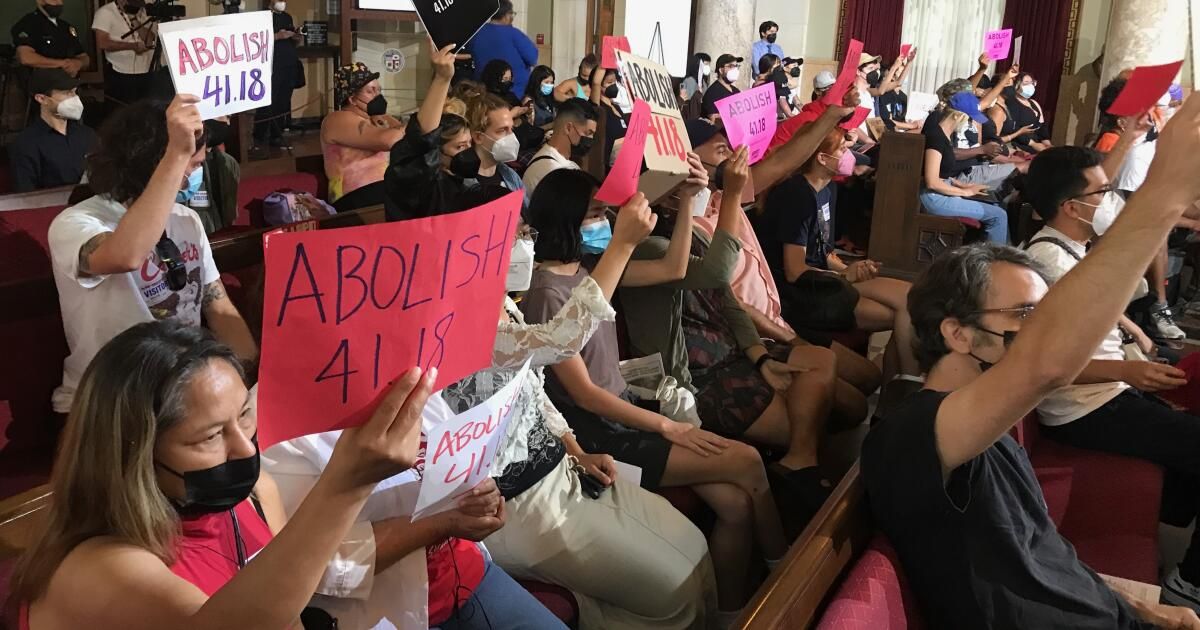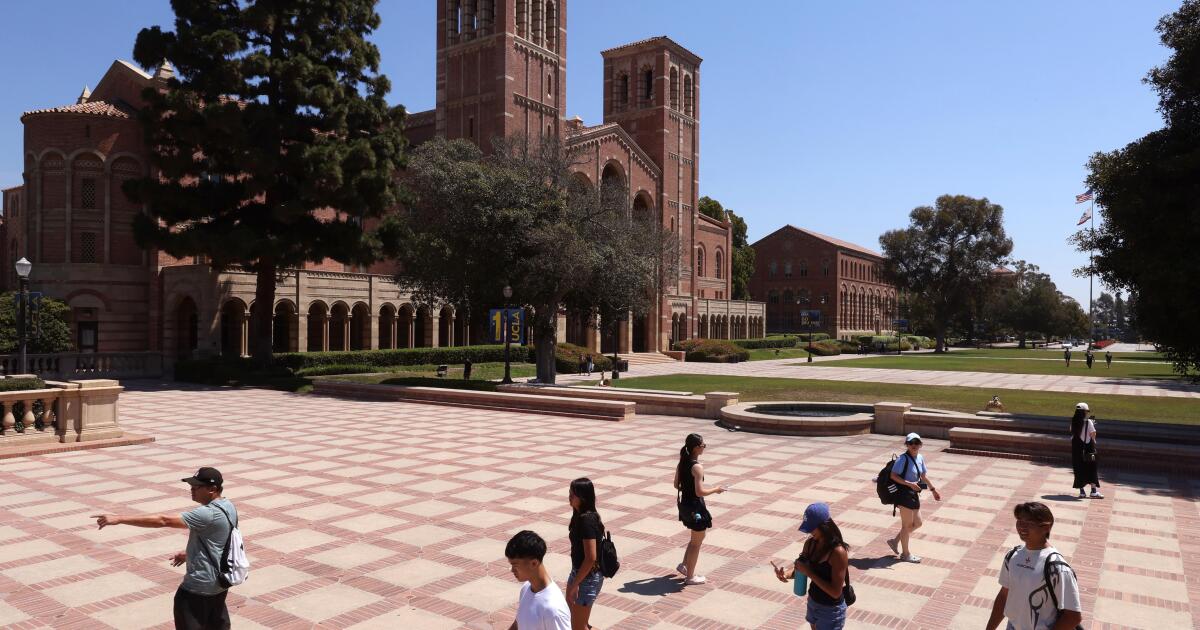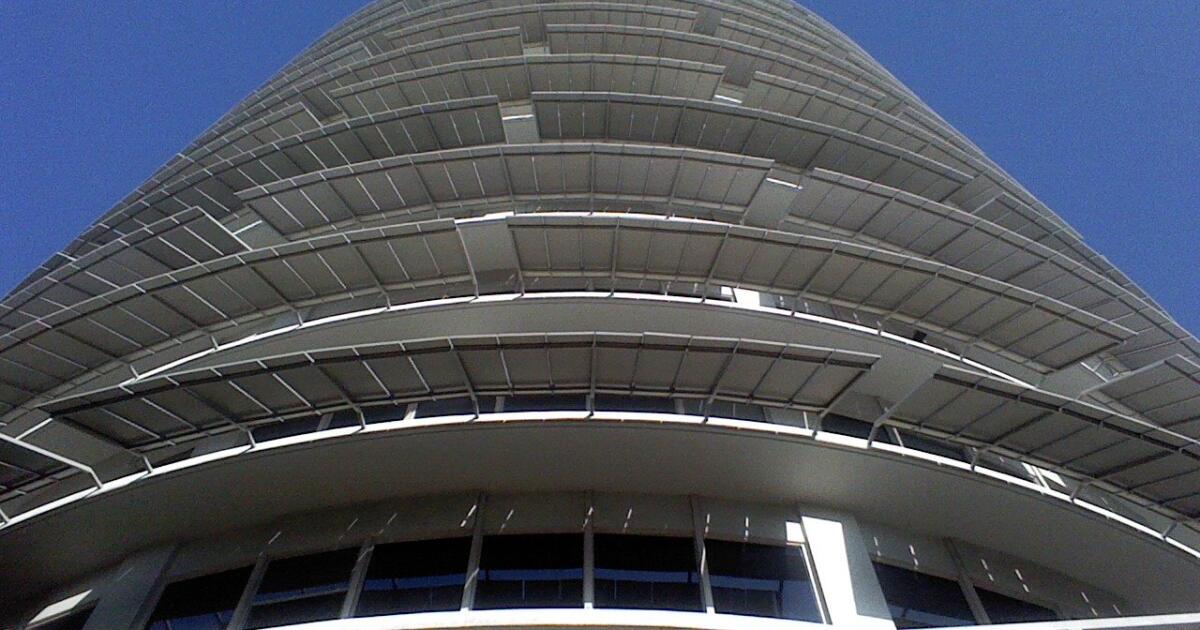There is no bigger political lightning rod right now in the city of Los Angeles than the anti-camping ordinance, which prohibits homeless encampments from certain streets and sidewalks in an effort to preserve the public right of way.
Under the 2021 law, known as 41.18 for its municipal code number, camping is prohibited in front of all schools, daycares and parks. Likewise, the City Council can prohibit camping in other specific areas at the request of the representative of that district.
Some council members have designated dozens of 41.18 sites in their districts. Others have never used the ordinance. Homeless advocates call the law cruel and pushes homeless people from sidewalk to sidewalk. Worse yet, when homeless people are cited for violating the ordinance, they are left with a fine they cannot pay. But some residents complain when council members don't use it, believing the ordinance will somehow solve homelessness.
Is working? We have been waiting almost a year to receive data on the performance of this controversial ordinance. Don't homeless people camp in those areas anymore? Were you offered any type of temporary accommodation upon leaving? They should have at least received offers of accommodation, according to the city's street engagement strategy. How many places are now under a camping ban? And how many citations has the Los Angeles Police Department issued when people refuse to leave a designated area?
Councilwoman Katy Yaroslavsky, who represents Council District 5, proposed a motion early last year asking that the council's chief legislative analyst, Sharon Tso, have input from city departments, to examine these questions and return with answers. In April, council passed the motion, which ordered Tso to submit a report within 60 days.
Nine months later, the council still hasn't gotten those answers. If ever there was a report that should be fast-tracked, this is it. Homelessness is the most pressing issue in Los Angeles, and this election year Angelenos need to know if the anti-camping law is accomplishing anything.
Tso says the delay is due to the amount of time it takes to obtain and examine data from a half-dozen departments at numerous anti-camp sites, 300 of which have been appointed by council members. She had questions, including for officials at the Los Angeles Homeless Services Authority, that needed answers. She has a lot of what she needs, but doesn't predict an end date. That's dissappointing.
LAHSA presented its analysis of 41.18 to Tso months ago and offers some insights that suggest the ordinance is not working as planned. For example, LAHSA officials found that 81% of campgrounds were repopulated with at least one previous camper.
This could be because only 17% of people entered temporary housing (even when people had already been working with community workers) and just over half of them left the housing and returned to the streets or to unknown locations. The hasty clearances may have disrupted relationships between outreach workers and the homeless. LAHSA says it has no dedicated housing resources for 41.18 clears. (It's not like the city's Inside Safe housing program, in which encampments are cleared after people are offered a hotel room or other temporary lodging.)
County Supervisor Lindsey Horvath, chairwoman of the Los Angeles County Board of Supervisors and chairwoman of the commission that oversees LAHSA, declared 41.18 “a failed policy that has only worsened the homelessness crisis.” and has cast doubt on LAHSA's analysis, which was only recently made public. in recent days, on the commission's agenda for its March 22 meeting. Meanwhile, Los Angeles City Council President Paul Krekorian, co-author of the motion establishing Bill 41.18, seems skeptical of LAHSA's analysis and says he has some questions.
The questions are fine. But city officials must show their own data on the anti-camping ordinance before casting doubt on LAHSA's, and certainly before another nine months pass.












